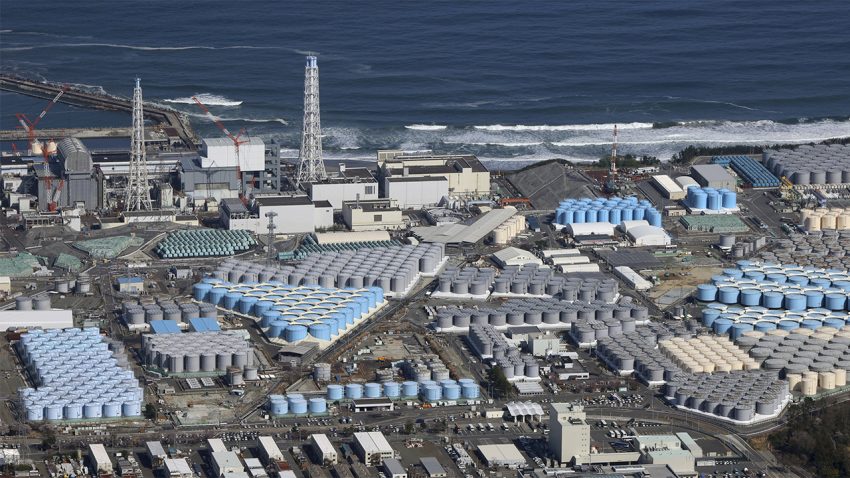The tsunami-damaged Fukushima Daiichi nuclear power plant began its third release of treated and diluted radioactive wastewater into the sea Thursday after Japanese officials said the two earlier releases ended smoothly.
The plant operator discharged 7,800 tons of treated water in each of the first two batches and plans to release the same amount in the current batch through 20 November.
Tokyo Electric Power Company Holdings said its workers activated the first of the two pumps to dilute the treated water with large amounts of seawater, gradually sending the mixture into the Pacific Ocean through an undersea tunnel for an offshore release.
The plant began the first wastewater release in August and will continue to do so for decades. About 1.33 million tons of radioactive wastewater is stored in about 1,000 tanks at the plant. It has accumulated since the plant was crippled by the massive earthquake and tsunami that struck northeastern Japan in 2011.
The plant began the first wastewater release in August and will continue to do so for decades. About 1.33 million tons of radioactive wastewater is stored in about 1,000 tanks at the plant. It has accumulated since the plant was crippled by the massive earthquake and tsunami that struck northeastern Japan in 2011.
Japan’s government set up a relief fund to help find new markets and reduce the impact of China’s seafood ban, while the central and local governments have led a campaign to eat fish and support Fukushima, now joined by many consumers.
The water is treated to remove as much radioactivity as possible then greatly diluted with seawater before it is released. TEPCO and the government say the process is safe, but some scientists say the continuing release is unprecedented and should be monitored closely.
So far, results of marine samplings by TEPCO and the government have detected tritium, which they say is inseparable by existing technology, at levels far smaller than the World Health Organisation’s standard for drinking water.
Meanwhile, the International Atomic Energy Agency (IAEA) experts present at the Fukushima Daiichi nuclear power plant says that the third batch of treated and diluted radioactive wastewater is far below the country’s operational limit.
IAEA experts stationed at the IAEA Fukushima NPS Office took samples from the third batch of diluted water on 30 October, after it was prepared for discharge. Using Agency equipment, the IAEA’s independent on-site analysis confirmed that the tritium concentration in the diluted water that is being discharged is far below the operational limit of 1,500 becquerels per litre.
The IAEA has confirmed that both previous batches – which started on 24 August and 5 October – also contained tritium concentrations far below operational limits.
Last week, the IAEA Task Force conducting the ongoing safety review of the water discharge said that the release was progressing as planned and without any technical concerns.
All reports on sampling, independent analysis and data evaluation will be available on the IAEA website.
